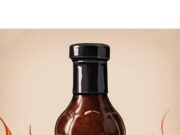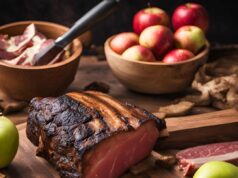Smoking meat is an art that requires mastering the ideal temperature for each type of meat. Achieving the perfect smoking temperature not only enhances flavors but also ensures food safety and tenderness.
This guide will explore the essential smoking temperatures for beef, pork, and poultry. It will provide you with tips for timing and share techniques to effectively control your smoker’s temperature.
By avoiding common mistakes, you can achieve perfectly smoked meat every time. Prepare to elevate your smoking skills to a new level.
Key Takeaways:
- Achieving the ideal smoking temperature is crucial for perfectly cooked meat.
- Different meats require different smoking temperatures.
- To achieve the perfect smoking temperature, use a meat thermometer and control your smoker’s temperature.
Understanding the Importance of Smoking Temperature
The smoking temperature of meat is crucial for achieving the desired flavor profile, ensuring safety, and enhancing the overall dining experience.
When you maintain the right smoking temperature, the complex chemical reactions involved in the Maillard reaction and smoke infusion will produce distinct flavors that elevate the taste of the meat. Cooking at appropriate temperatures is essential for preserving the juiciness of the meat; excessive heat can lead to moisture loss, resulting in a dry texture.
It is equally important to carefully adhere to food safety standards, specifically those temperatures that prevent the growth of harmful bacteria, ensuring that the meat remains safe to consume.
Understanding the intricacies of temperature control not only influences flavor and safety but also impacts texture and tenderness, making it vital for you to comprehend the optimal ranges for achieving a superior final dish.
Ideal Smoking Temperatures for Various Meats
Different types of meat require specific smoking temperatures to achieve their ideal flavor and texture, ensuring a perfect balance of tenderness and juiciness. Understanding these requirements is essential for optimal results in your smoking process.
Beef
When smoking beef, especially cuts like brisket or tri-tip, it is essential for you to maintain the right temperature to achieve the desired tenderness and rich flavor.
For these cuts, the ideal smoking temperature typically ranges from 225°F to 250°F. This temperature allows collagen and fat to break down slowly, which is crucial for achieving the right texture. The internal temperature should reach approximately 195°F to 205°F for brisket to ensure it is meltingly tender.

Various cooking techniques, such as wrapping the meat in butcher paper during the cooking process, can enhance moisture retention. Additionally, selecting wood types like hickory or mesquite can impart distinctive flavors that elevate the overall experience.
Understanding these nuances will not only improve your final dish but also deepen your appreciation for the art of smoking.
Pork
Smoking pork, whether it’s ribs, shoulder, or chops, requires a careful balance of temperature to achieve a juicy and flavorful outcome.
Achieving the ideal smoking temperature is crucial, as it varies by cut and can significantly influence the final taste and moisture of the meat. For example, you should smoke pork ribs at approximately 225°F to 250°F, while shoulder cuts can tolerate temperatures ranging from 225°F to 275°F for several hours to break down connective tissues, resulting in a tender bite.
Selecting the right wood is also important; hickory offers a robust flavor, while applewood provides a sweeter profile, both enhancing the smoking experience. Additionally, maintaining proper food safety measures, such as ensuring an internal temperature of 145°F for cooked pork, is essential to prevent foodborne illnesses while enjoying the complex layers of flavor.
Poultry
To achieve perfectly smoked poultry, such as chicken or turkey, it is crucial for you to closely monitor the smoking temperature to ensure that the meat remains juicy and flavorful.
Maintaining the appropriate temperature not only enhances the taste but also ensures that harmful bacteria are eliminated, making the meat safe to consume. Typically, smoking should occur at temperatures between 225°F and 250°F, and it is essential to check internal temperatures, aiming for at least 165°F to ensure doneness, particularly in thicker parts like the breast.
For optimal flavor, consider marinating the poultry for several hours or overnight with a blend of herbs and spices to impart depth to the dish. Additionally, selecting the right wood for smoking—such as hickory for a robust flavor or applewood for a milder taste—can significantly influence the final outcome, elevating your smoked chicken or turkey experience.
How to Determine Smoking Time for Different Meats
Determining the smoking time for various meats is crucial, as it can greatly impact the final flavor and texture. This aspect is an essential element of the BBQ process that should not be overlooked.
Tips for Achieving the Perfect Smoking Temperature
Achieving the optimal smoking temperature requires a combination of technique, precise control, and the appropriate equipment. This careful approach ensures a delightful dining experience.
Using a Meat Thermometer
A meat thermometer is an essential tool for any BBQ enthusiast, enabling you to accurately monitor the internal temperature of your smoked meats to ensure optimal juiciness and safety.
Familiarizing yourself with the different types of meat thermometers can significantly enhance your grilling experience. Digital thermometers offer quick and highly accurate readings, while dial models remain traditional favorites with their timeless appeal. If you value convenience, probe thermometers with Bluetooth capabilities allow you to monitor temperatures remotely, providing reassurance during lengthy smoking sessions.
Understanding how to use these devices effectively is crucial; it is important to position the thermometer’s probe in the thickest part of the meat without touching the bone to ensure accurate readings. Additionally, knowing the ideal internal temperatures—such as 165°F for chicken and 145°F for pork—is essential for achieving flavorful results while maintaining food safety.
Controlling Your Smoker’s Temperature
Controlling your smoker’s temperature is crucial for achieving optimal results when smoking various types of meat, necessitating a thorough understanding of your equipment and techniques.
A well-regulated temperature not only preserves the flavor and juiciness of the meat but also ensures even and safe cooking. One of the primary methods for managing temperature involves adjusting airflow; opening vents increases the oxygen supply, raising temperatures, while closing them aids in cooling the smoker down.
The choice between charcoal and wood significantly impacts heat consistency and flavor profile. Charcoal typically provides a more stable temperature, while wood can add distinctive flavors but may require closer monitoring.
Adapting to weather conditions—such as wind and humidity—is essential. Wind can quickly cool the smoker, requiring an increase in heat output, while humidity levels can influence cooking duration and moisture retention of the meat. Therefore, it is imperative for smokers to remain vigilant regarding these environmental changes to ensure a successful smoking experience.
Avoiding Common Smoking Mistakes
Avoiding common smoking mistakes is crucial for achieving the perfect BBQ result, ensuring that your meat is flavorful, safe, and cooked to perfection.
Many home cooks often overlook the importance of closely monitoring the temperature throughout the smoking process, which can lead to undercooked or overcooked results. Additionally, selecting the wrong type of wood can impart undesirable flavors to the meat, compromising the overall experience.
To address these issues, it is essential for you to invest in a reliable meat thermometer to track internal temperatures and make adjustments as needed. Understanding the characteristics of different wood types will also aid you in choosing the right one to complement your selected meat, enhancing the smoky flavor while avoiding any bitterness.
Frequently Asked Questions
What is the ideal smoking temperature for pork?
The ideal smoking temperature for pork is between 225-250 degrees Fahrenheit. This allows the meat to cook slowly and evenly, resulting in tender and juicy smoked pork.
How can I achieve the ideal smoking temperature for beef?
The ideal smoking temperature for beef is between 250-275 degrees Fahrenheit. This temperature range ensures that the beef is cooked to the desired level of doneness without drying out or becoming tough.
What is the recommended smoking temperature for chicken?
The recommended smoking temperature for chicken is 275-300 degrees Fahrenheit. This higher temperature helps to crisp up the skin while cooking the chicken to a safe internal temperature.
Can I use the same smoking temperature for different types of meats?
It is not recommended to use the same smoking temperature for different types of meats. Each type of meat has its own ideal temperature to ensure the best flavor and texture. It is important to research the recommended smoking temperature for each type of meat you are cooking.
What factors can affect the smoking temperature for different meats?
The type of smoker, outside temperature, wind, and humidity can all affect the smoking temperature for different meats. It is important to monitor and adjust the temperature as needed during the smoking process.
How can I maintain the ideal smoking temperature for different meats?
To maintain the ideal smoking temperature for different meats, use a meat thermometer to monitor the internal temperature of the meat. Adjust the smoker’s temperature accordingly and make sure to check the fuel levels to ensure a consistent heat source.




















































